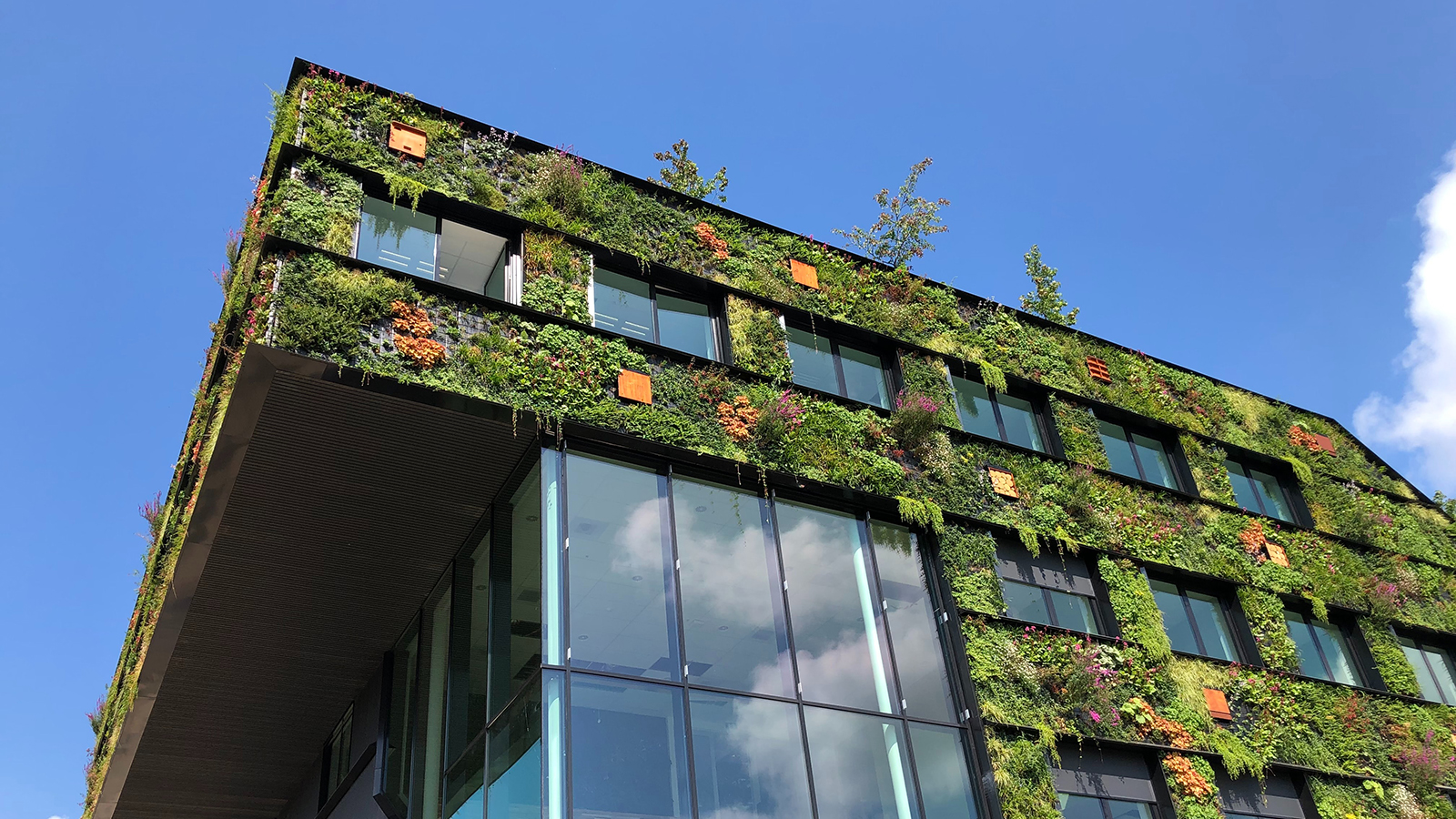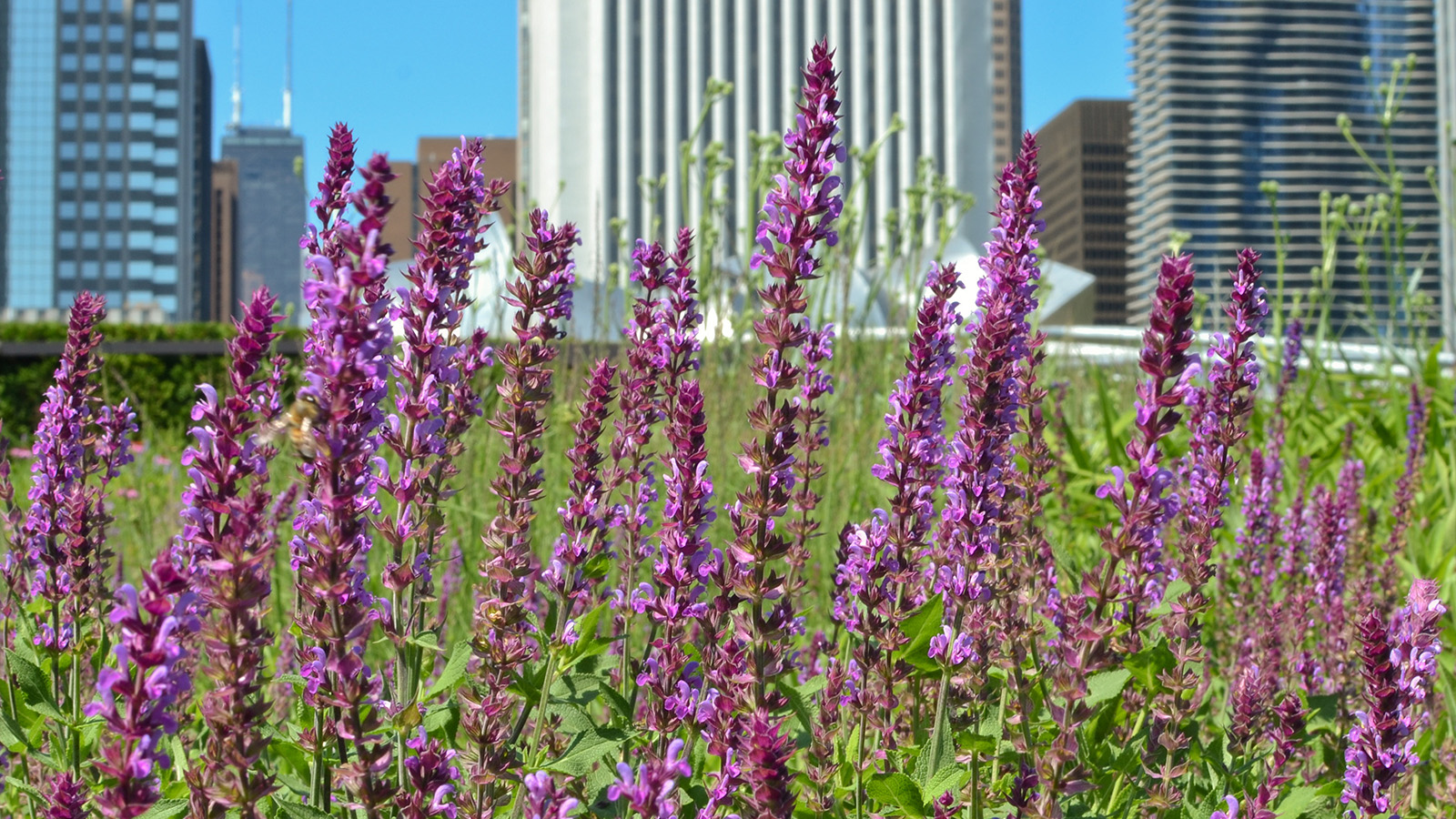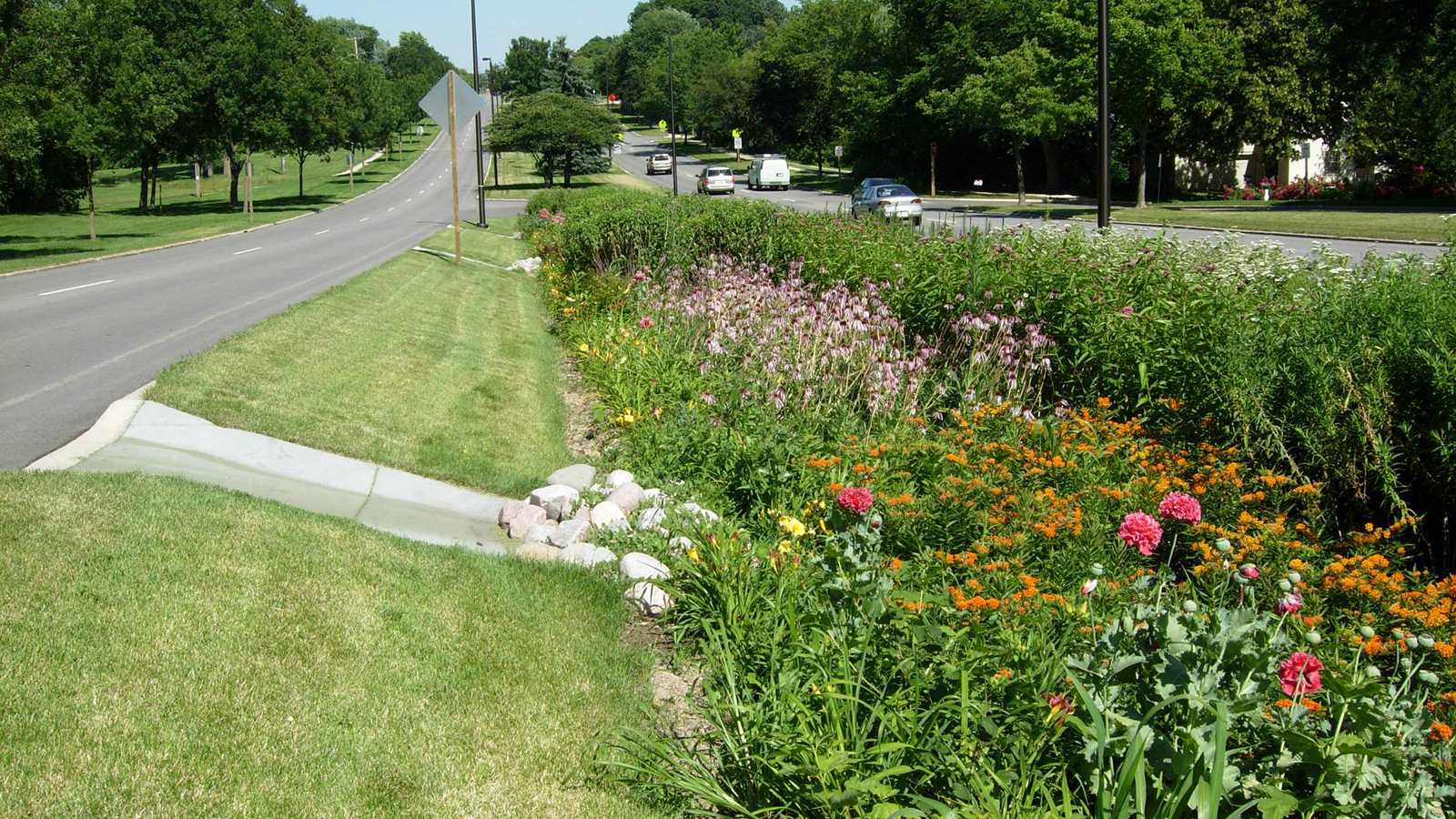
Green infrastructure funding can help cities save the bees
Want to use green infrastructure to help save pollinators? There’s plenty of funding to make it happen.
Green infrastructure is a win for the environment, a win for our communities, a win for the climate, and a win for the bees, butterflies and other pollinators suffering because of human-caused habitat loss.
But if you’re a policymaker trying to figure out how to square all this with your city budget, or an engaged citizen wanting to nudge your local authorities into making these kinds of changes in your neighborhood, there’s an obvious question: how do we pay for it?
The good news is that there’s no shortage of money for green infrastructure – including projects that expand or improve habitat for pollinators. There is a wide range of funding sources and financing strategies available to fund pollinator-friendly green infrastructure in both cities and rural areas, with financial assistance available from the federal government, state and local governments, and private and nonprofit sources.
One of the great things about nature-based infrastructure is the wide range of benefits it can bring. A bioswale installed to mitigate flooding can also provide habitat for wildlife. Street trees planted to clean the air in our cities can also combat the urban heat island effect. And so on. This means that these and other forms of green infrastructure are eligible for funding from a wide variety of sources, including ones that might not necessarily be the obvious go-to programs for local decisionmakers.
Federal funding
Federal dollars in the form of competitive grants or formula programs can provide a significant source of funds for green infrastructure. Water quality grants for pollution reduction and stormwater management initiatives, including through the EPA’s Clean Water Act Section 319 Nonpoint Source Program, the Urban Waters Small Grants Program and others, are available for projects like bioswales, which can be planted with pollinator-friendly native plants. Incorporate those plants into your stormwater mitigation plans and you could be eligible for wildlife conservation or pollinator grant funding too, for example through U.S. Fish and Wildlife Service-funded State Wildlife Grant Programs.
Certain green infrastructure projects could also qualify for federal transportation grants, for example through the U.S. Department of Transportation’s (U.S. DOT) Transportation Alternatives Program and Congestion Mitigation and Air Quality (CMAQ) program. Both can fund the construction of bike paths, trails, footpaths and sidewalks, all of which can be designed to include native landscaping, bioswales and other nature-based stormwater drainage infrastructure that can in turn be constructed with pollinator habitat in mind.
U.S. DOT funding is also available through the Surface Transportation Block Grant program, and, thanks to the 2021 Infrastructure Investment and Jobs Act, there will soon be an extra $10 million available specifically to fund pollinator habitat restoration along roadways, plus $7.3 billion through the Promoting Resilient Operations for Transformative, Efficient, and Cost-Saving Transportation (PROTECT) Formula Program for projects designed to make transportation infrastructure more resilient to extreme weather and natural disasters. Such projects include ones that make use of green infrastructure.
Other potential sources of federal funds for green infrastructure projects include:
- The U.S. Department of Housing and Urban Development, for example through the Community Development Block Grant, Sustainable Communities Regional Planning Grants and Community Challenge Planning Grants;
- The U.S. Department of Homeland Security, through the FEMA Pre-Disaster Mitigation Grant Program and others;
- The U.S. Department of Agriculture, through the Rural Development Water and Environmental Programs, Rural Development Water and Waste Disposal Loan and Grant Program, and U.S. Forest Service Urban and Community Forestry Program, among others.
State funding
As with federal programs, the multiplicity of benefits green infrastructure brings means that financial support can come from a wide variety of state programs, from stormwater management and water quality improvement programs to wildlife preservation, land conservation and agricultural programs. Again, transportation funds administered through state departments of transportation, for example, can provide money to improve local green infrastructure. State sources obviously differ from state to state, but a quick Google search for environmental grant programs in your state will likely turn up more than a few lists of resources to draw on.
Local Funding
Local governments can – and often do – fund green infrastructure projects out of general tax revenue, largely meaning property taxes, sales taxes, and in some areas, income taxes. Other local options include the use of revenue from permit fees levied on, for example, proposed construction projects likely to exacerbate stormwater issues, and stormwater utility fees, whereby residents pay a fee to the city to channel stormwater from their properties in much the same way as we pay for water, sewer and garbage collection services.
Each of these has its advantages and disadvantages, which may vary from region to region – in some places it may not be possible to guarantee a stable and predictable revenue stream from one or even all of them – but they can nonetheless provide an important source of funding that can be put toward green infrastructure, in combination with state and/or federal grants if necessary.
Local sources of funding are also important when it comes to maintaining green infrastructure once it’s built. Grants available for planning, designing and building this infrastructure (or indeed any infrastructure) typically don’t cover ongoing maintenance costs, which means that local authorities need to establish a stable, dedicated source of funding to cover those expenses. Local tax revenue, stormwater utility fees, municipal or district funds, landowner fee assessments and public-private partnerships have provided funding in various areas of the country that have incorporated green infrastructure components into their communities.
Alternative options
Sources of private funding for nature-based infrastructure in general, and pollinators specifically, have become more numerous over recent years. Various kinds of public-private partnerships and public financing strategies like municipal bonds and Clean Water State Revolving Fund (CWSRF) loans are also important tools that municipal governments can use to cover the capital costs involved. (The EPA has stated its intention to put green infrastructure projects first in line for CWSRF funds, potentially making it a good bet for local agencies looking to bring nature back into their cities.)
Green infrastructure projects in many parts of the country have often been made possible by combining multiple sources of federal, state and local funding, and there are plenty of resources online to help grantseekers figure out what options are available in their states. The EPA provides an extensive list of funding opportunities and resources for green infrastructure, and on top of that, there’s a growing wealth of funding sources for establishing pollinator habitat in general that can potentially be added into the mix, from national programs like the National Fish and Wildlife Foundation’s Monarch Butterfly and Pollinators Conservation Fund to state funds like California’s Pollinator Habitat Program to the numerous foundations providing grants for local and regional-level wildlife habitat restoration efforts.
Patching together funding from multiple sources might sound complicated, but a growing number of cities have found it to be an effective strategy for funding green infrastructure. As those cities and others can attest, the bottom line is this: if anyone ever tells you there aren’t financial resources to expand pollinator-friendly habitat in your area, they’re just not looking in the right places. The money is out there.
If you know of other useful resources that aren’t included in this piece but should be, please send your recommendations to [email protected]

Five types of urban habitat for bees and butterflies

How to make our cities a home for bees, butterflies and other pollinators
Authors
James Horrox
Policy Analyst, Frontier Group
James Horrox is a policy analyst at Frontier Group, based in Los Angeles. He holds a BA and PhD in politics and has taught at Manchester University, the University of Salford and the Open University in his native UK. He has worked as a freelance academic editor for more than a decade, and before joining Frontier Group in 2019 he spent two years as a prospect researcher in the Public Interest Network's LA office. His writing has been published in various media outlets, books, journals and reference works.
Steve Blackledge
Senior Director, Conservation America Campaign, Environment America Research & Policy Center
Started on staff: 1991 B.A., Wartburg College Steve directs Environment America’s efforts to protect our public lands and waters and the species that depend on them. He led our successful campaign to win full and permanent funding for our nation’s best conservation and recreation program, the Land and Water Conservation Fund. He previously oversaw U.S. PIRG’s public health campaigns. Steve lives in Sacramento, California, with his family, where he enjoys biking and exploring Northern California.
Marcia Eldridge
President, Environmental Action Research & Policy Center



